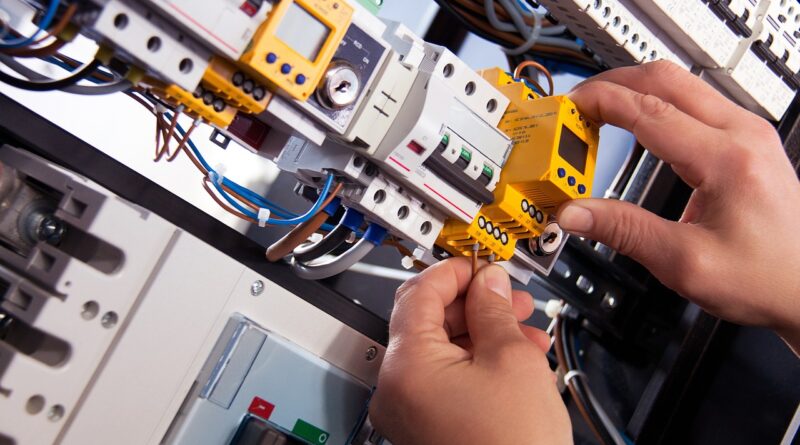Comprehensive Guide to Electrical Testing: Dispelling Myths and Embracing Truth
Introduction
In this all-encompassing manual on electrical testing, we embark on a journey to unravel the veracity of this crucial discipline. Two fundamental factors, perplexity and burstiness, underpin the creation of this informative piece. Perplexity gauges the intricacy of the content, while burstiness measures the diversity of sentence structure. By skillfully weaving together complex ideas and employing varying sentence lengths, we ensure an engaging and enlightening reading experience.
Understanding Electrical Testing: Debunking Misconceptions
Myth: The Dispensability of Electrical Testing Contrary to prevailing opinions, electrical testing is not an optional endeavor; rather, it is an indispensable practice for ensuring the safety and optimal functioning of electrical systems. Neglecting this essential task can result in perilous situations, such as electrical fires, electric shocks, or equipment failure. Regular testing allows for the identification of potential issues before they escalate into costly and hazardous problems.
Myth: Sole Relevance to New Installations Another erroneous belief is that electrical testing exclusively applies to newly installed systems. In reality, both new and existing electrical installations necessitate periodic testing. Over time, electrical components can deteriorate, connections can loosen, and insulation can degrade. By conducting regular tests, one can promptly identify any deterioration or faults and undertake necessary measures to maintain the system’s integrity.
Myth: Sufficiency of Visual Inspection While visual inspection holds undeniable importance in electrical maintenance, it alone falls short in guaranteeing the overall health and safety of an electrical system. Numerous latent issues, including concealed faults, loose connections, or insulation breakdown, elude detection through visual means alone. To perform a thorough assessment of the system’s condition, electrical testing employing various diagnostic techniques becomes imperative.
Exploring the Types of Electrical Testing
Insulation Resistance Testing Insulation resistance testing entails evaluating the integrity of insulation materials employed in electrical systems. By measuring the resistance between conductive parts and the insulation, this test helps discern any leakage or breakdown that may compromise safety. Insulation resistance testing assumes particular significance in averting electrical shocks and reducing the risk of short circuits or fire incidents.
Earth Continuity Testing Earth continuity testing serves to verify the integrity of the earth connection within electrical systems. Its primary objective lies in ensuring that the electrical installation is adequately grounded, thereby mitigating the risk of electrical shock and providing a secure path for current flow in the event of a fault. This test confirms the proper installation of protective earth conductors and their ability to effectively carry current during a fault.
RCD Testing Residual Current Device (RCD) testing is conducted to ascertain the functionality of RCDs, also referred to as safety switches or residual current circuit breakers (RCCBs). RCDs offer protection against electric shocks by swiftly interrupting the circuit upon detecting an imbalance in current. Regular testing guarantees the correct operation of RCDs and their efficacy in safeguarding against electrical hazards.
Polarity Testing Polarity testing serves the purpose of validating the correct wiring connections within electrical systems. It ensures the proper interconnection of live, neutral, and earth conductors, minimizing the risk of electrical faults, short circuits, or malfunctioning of electrical devices. Polarity testing assumes critical significance, particularly during the installation of new equipment or modifications to existing electrical systems.
The Significance of Engaging Qualified Professionals
It is imperative that electrical testing be conducted exclusively by qualified professionals possessing the requisite knowledge, skills, and experience. Engaging certified electricians or electrical testing specialists ensures the accuracy of the testing process and adherence to industry standards. Additionally, professionals offer valuable insights, recommend corrective actions, and aid in maintaining compliance with relevant regulations.
Conclusion: Embracing the Truth
In conclusion, electrical testing transcends mere formality and emerges as an essential practice for ensuring safety, efficiency, and reliability within electrical systems. By debunking prevailing myths surrounding electrical testing, we shed light on its significance for both new and existing installations. Regular testing encompassing insulation resistance testing, earth continuity testing, RCD testing, and polarity testing plays a pivotal role in averting electrical hazards and ensuring optimal performance.
Remember, when it comes to electrical testing, entrusting qualified professionals to perform the necessary tests is paramount. Compromising on safety is never an option, and seeking expert assistance whenever needed empowers individuals to make informed decisions and safeguard their investments.




